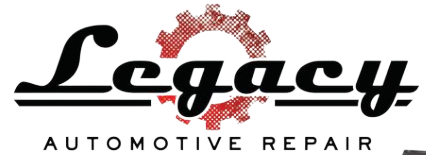Unfortunately, Failed smog when it is time to renew your tags, it’s time to deal with the Department of Motor Vehicles (DMV). to provide the DMV with a certificate showing that the car has passed or it could fail smog the emission test. Simple enough sounds, okay? But if your car doesn’t go through, what happens?
For a driver whose car appears to be running smoothly, a failed emissions test will come as a complete surprise. A broken gas cap cover can range from the cause of a failed test to a problem with the exhaust system, but how do you know what’s really going on?
Common Reasons Why Car Fail on Smog Tests
Overdue Change Oil. An overdue oil change is one cause for a failed emissions test. Your vehicle’s manual can tell you how frequently you need to change your oil, and missing these vital thresholds will result in failing marks during an emissions test. Dirty oil in the crankcase, Edmunds.com says, could release additional pollutants. On the other side, fresh oil means less hydrocarbons (i.e. raw gas vapors), plus a cleaner engine in terms of emissions output. Fortunately, this is a fairly easy fix-get an oil shift!
Car Exhaust Issues. Issues with the exhaust of your car can also contribute to failing marks. Extreme weather and general wear and tear will leave a vehicle in need of exhaust repairs over time. You may experience symptoms of a damaged exhaust system if you have experienced increased engine noise, reduced fuel efficiency, or vibrations in the driver’s seat, gas pedal, or steering wheel. Your car will not only pass the emissions test once the problem is diagnosed and repaired, but you will enjoy a smoother, quieter ride and potentially better gas mileage. For you, your passengers, and the world, that sounds like a win.
Check Engine Light Is On. It may seem like a no-brainer, but hear us out. Have you ever had a friend who, despite the fact that their dashboard was illuminated like a Christmas tree, managed to drive their car without problems? Don’t be a supporter of that. If your engine light is turned on, your car will automatically fail to produce emissions. No ifs, ands, or buts for that matter. Your car’s engine is a complex machine and anything could be thrown out of whack by a leak somewhere inside it. A defective oxygen sensor is the most common explanation why the check engine light comes on, a repair that costs just under $200 to correct according to their estimates. Ignore it, and it could lead to problems with catalytic converters and a more than $1,000 repair bill. Again, your engine is a complex machine, so it’s hard to identify one reason why your engine light control may be on. A technician can pinpoint the exact issue with a diagnostic test and provide you with an approximate repair cost.
Repair Cost for a Car with Failed Smog Test
It’s tougher to know how to repair a vehicle that has failed a smog inspection. Usually, the smog technician offers a form showing the reason the car failed and its rate of pollution. To find out if they know how to fix the problem, carry this to your mechanic. If you still have trouble finding the problem, ask your mechanic to conduct a “smoke test” that forces smoke into the evaporative system of the car to find any leaks leading to and from the engine in the rubber hoses. This is how the cracked rubber hose that caused my car to crash was eventually found. It cost $139 for the test and repair.
For cars that fail the first time, retesting it at a “fix and repair” station rather than one that does testing only. Technicians are experts in repairing emission systems, minimizing the need for all the back and forth driving that I experienced between garages and testing stations.
And finally, you may be eligible for financial assistance if you fail the test and you’re low on repair funds. In California, for instance, the Consumer Assistance Program provides up to $1,200 for emissions-related repairs to eligible vehicle owners. Bureau of Automotive Repair
feel free to browse our website fill form below for more or click here

